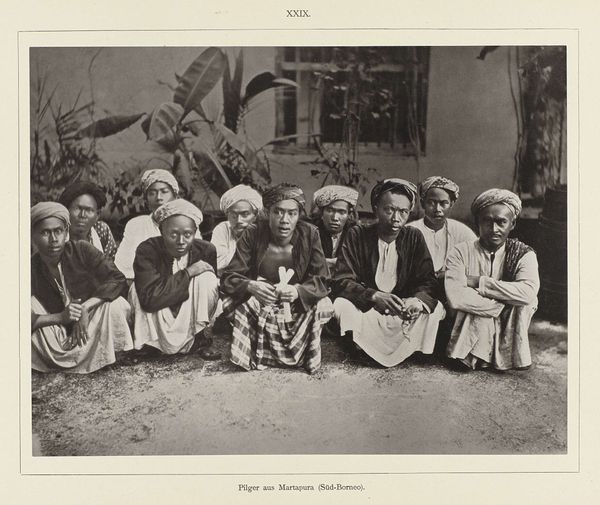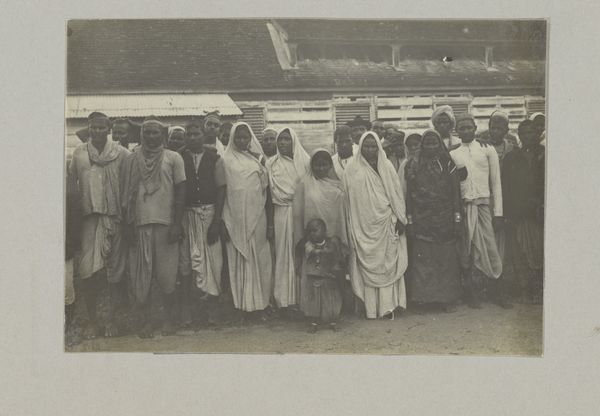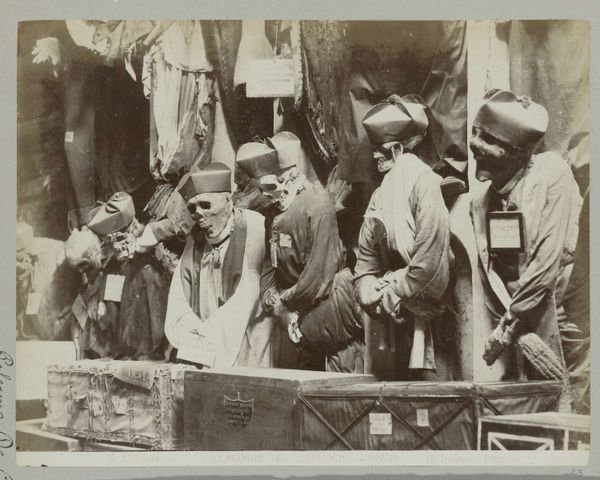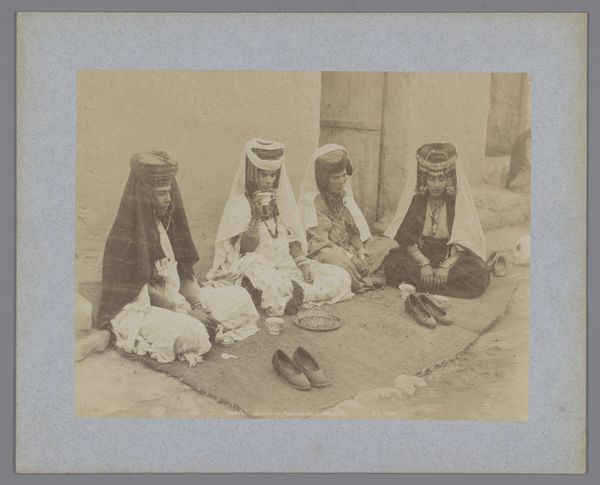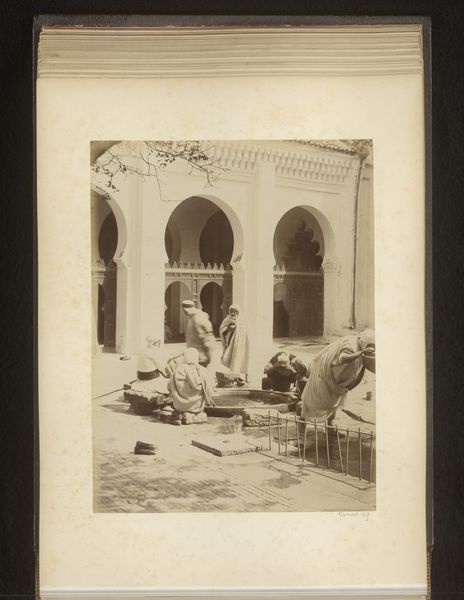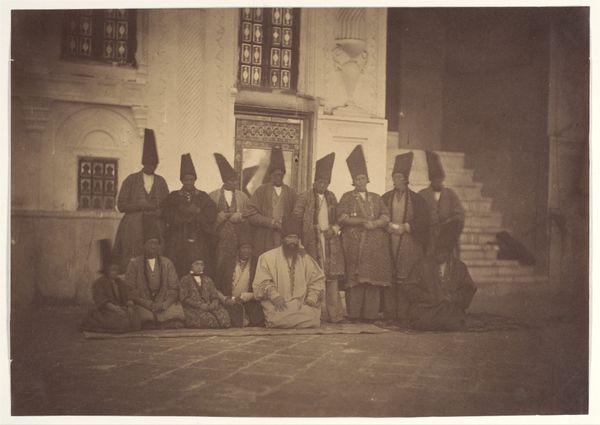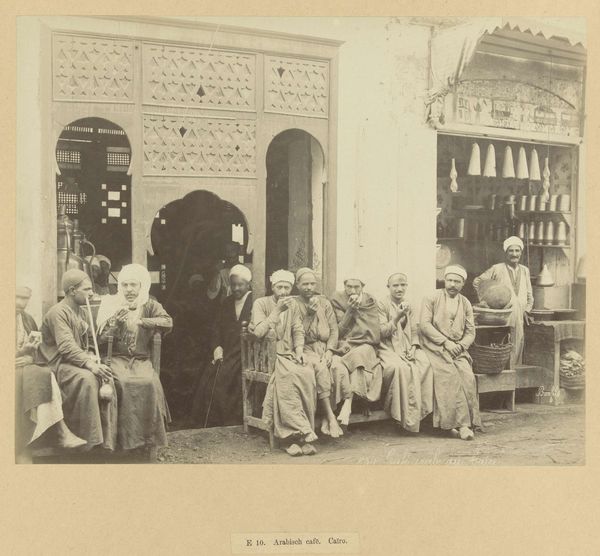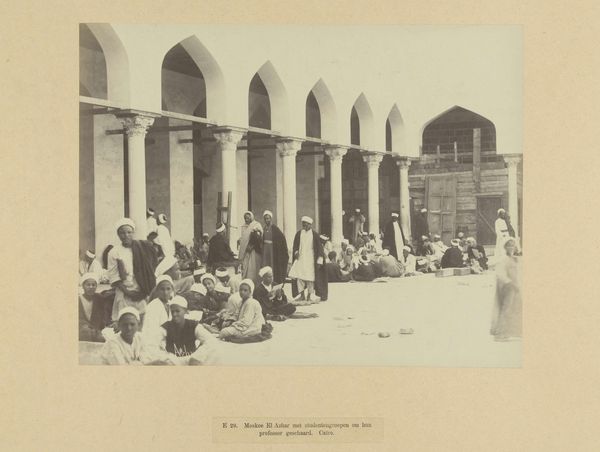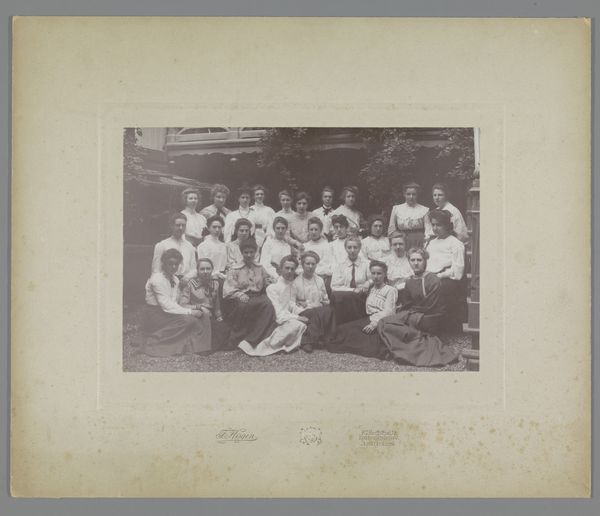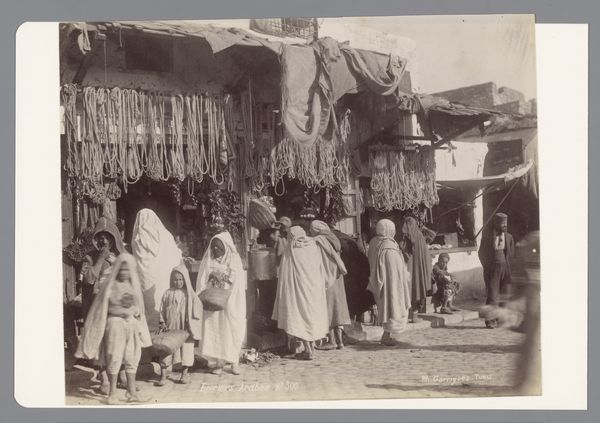
photography, albumen-print
#
portrait
#
16_19th-century
#
photography
#
group-portraits
#
orientalism
#
islamic-art
#
albumen-print
Dimensions: height 199 mm, width 251 mm
Copyright: Rijks Museum: Open Domain
Editor: Here we have "Snake Charmers in Tunis," an albumen print photograph by J. André Garrigues, taken sometime between 1860 and 1900. There is such a formal quality to the arrangement of figures and props... What cultural narratives were being constructed with this image, in your opinion? Curator: The keyword here is 'constructed'. This image, like many Orientalist photographs of the period, reveals more about the European gaze than it does about the reality of life in Tunis. Think about how photography was used at the time. Editor: As a documentary tool? Curator: Partially, yes. But also as a tool for constructing and reinforcing colonial power dynamics. The photograph exoticizes and freezes this moment, transforming these snake charmers into objects of curiosity for a Western audience. Notice the backdrop—what kind of message does that impart, compared to just a city street? Editor: It definitely seems like a set, deliberately composed, not candid at all. And it reinforces stereotypical ideas about the East. The people and their traditions become a spectacle, rather than… well, people just living their lives. Curator: Exactly! It plays into existing power structures, defining the East as ‘other’ and reinforcing a sense of Western superiority. And photographs like this one were often exhibited and circulated widely, solidifying those ideas. It becomes difficult to understand a photograph on its own terms, divorced from its impact on cultural perceptions. Editor: So, it's important to analyze the context in which it was made and consumed, not just the image itself. I’ll definitely consider how the presentation of different cultures is constructed and presented.
Comments
No comments
Be the first to comment and join the conversation on the ultimate creative platform.
